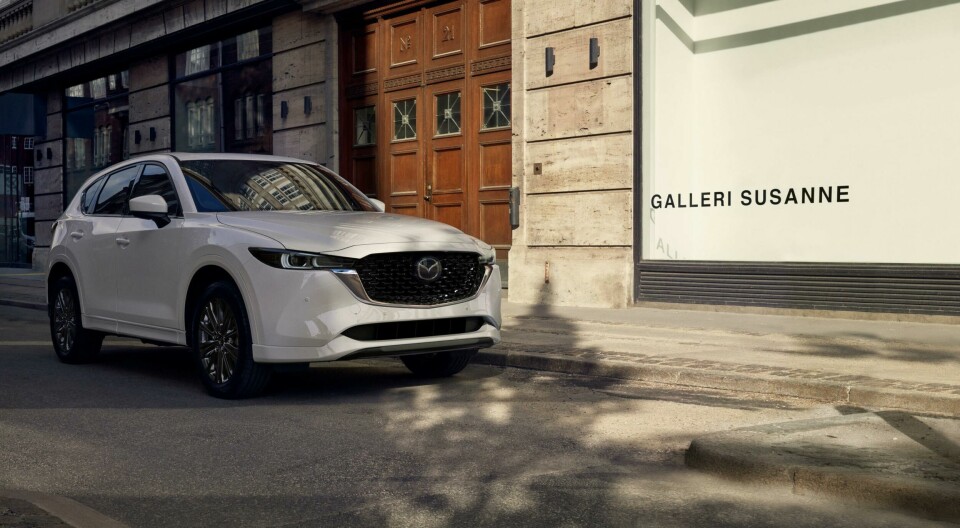
Mazda Aims for Outdoorsy Crowd with the new CX-50
Mazda‘s CX-50 combines precise driving dynamics with a more rugged look than we are used to seeing from the Japanese OEM, writes Laura Burstein
In the U.S., Mazda is the choice if you’re looking for a sporty car on a budget. Perhaps best known for its iconic MX-5 Miata — penned by a design team that included Tom Matano and C. Mark Jordan — the marque is renowned for its track-worthy performance and race-tuned driving dynamics. But as American tastes shifted more and more toward utility vehicles, Mazda kept pace with the elegant CX-5, CX-7 and CX-9 SUVS. Now, in a departure from the brand’s typical offerings, Mazda introduces the more rugged CX-50, a compact SUV created exclusively for the North American market.
“You have vast land in the United States,” Mazda Chief Designer Eiji Kimoto told us during a walkaround. “Against that kind of background, we wanted to make sure this vehicle wasn’t overridden by the big sky or big land. If you were to make a subtle design expression in this environment, the design wouldn’t stand out enough.”
The new utility vehicle aims to blend Mazda’s value and precise driving dynamics with a new design aesthetic that the company hopes will appeal to a more active, adventurous crowd. While other Mazda SUVs are more swept-back, the CX-50 has a more boxy, upright stance. “The proportion is always so important. It looks low and wide with a solid presence,” Kimoto explains. In the front, Mazda’s “wing” grille design is wider and chunkier, done in black instead of the usual chrome.
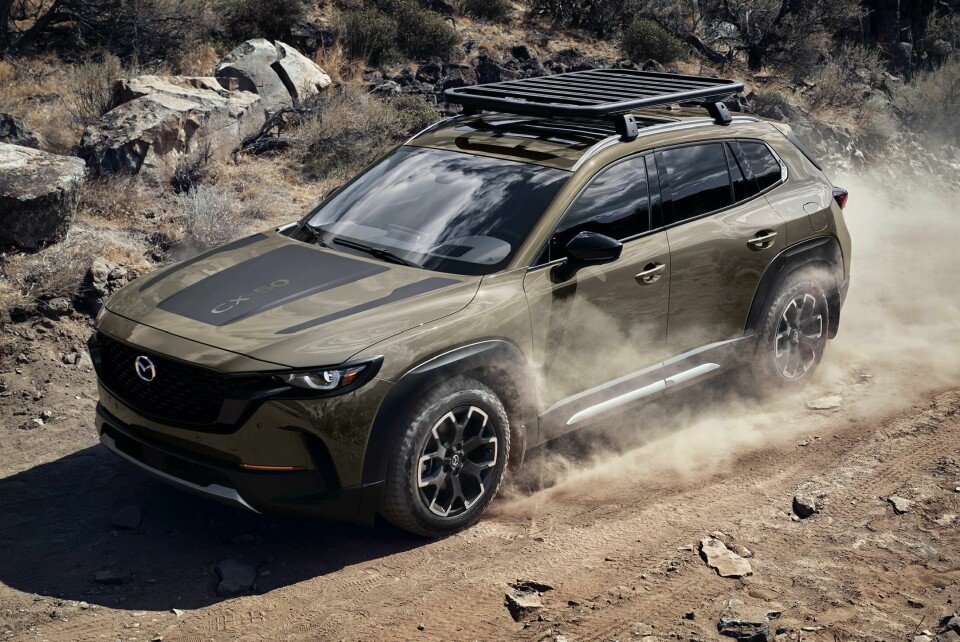
“This is an outdoor oriented vehicle, so we wanted to make it stronger and wider compared to other treatments,” Kimoto says. “For the headlight, in the past we used a round-shape lamp, so we wanted to make the eyes a little bit sharper and also make it look strong.”
Exterior colours for the CX-50 include a blue-leaning Polymetal Gray Metallic, the bolder Ingot blue Metallic, and Zircon Sand metallic, a golden beige inspired by nature. “The Light is so strong in the United States, we can show a great contrast due to the reflection of shadow and light,” Kimoto says. “We were looking for a beige colour, and we looked at sand castles [for inspiration]. We noticed that in the light, the colour looked different according to the angle. So that’s what we did with the Zircon. I wanted to give a little bit of depth.”
Citing customer research, every CX-50 gets black cladding around the bumpers, rocker panels, and wheel arches. It’s a lot of plastic, but Kimoto says the design team sculpted these elements to help make them look more premium. “If you have just black cladding it might look boring, so here you can see more of a three-dimensional design. We want people to associate the black-colour cladding [with capability] and hope people can feel more confident. We also made sure the fender looks strong and the fender flare stands out.”
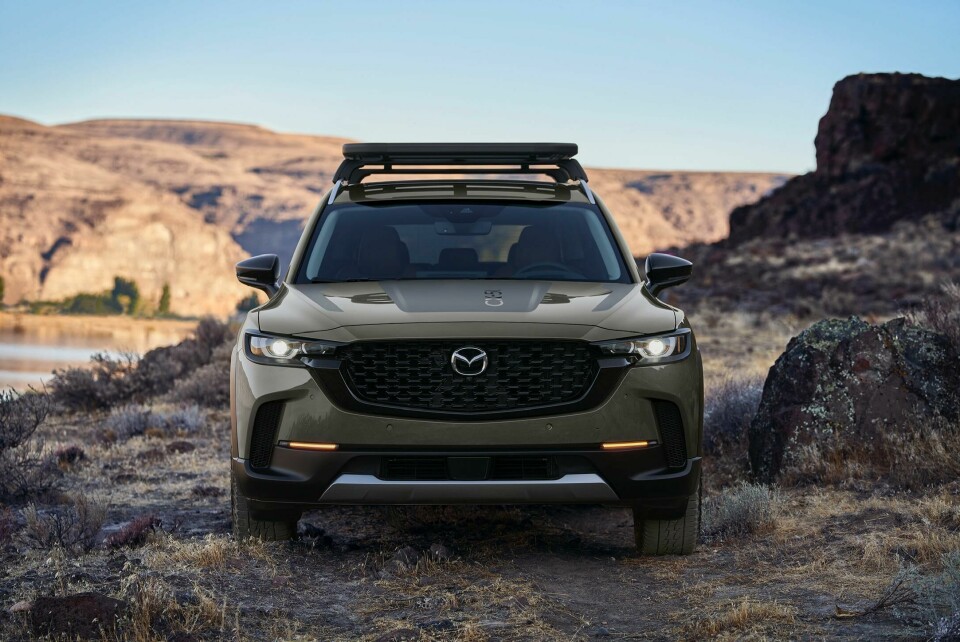
Under the bonnet is a choice of two ICE powertrains: a 2.5-litre 4 cylinder engine that makes 187 hp and 186 lb.-ft. of torque, and a turbocharged version that can reach its peak of 256 hp and 320 lb.-ft. of torque with 93 octane fuel (power is reduced with lower grades). To underscore its outdoor capability, every CX-50 gets all-wheel-drive.
Our test car on California’s central coast was the top-of-the-line Turbo with the Premium Plus package, which we drove from the town of Santa Barbara, down straight highways and around narrow and winding mountain roads. Mazda’s engineering team says it was a challenge to create a more outdoor-capable car whilst maintaining its signature sporty driving dynamics, but they seemed to accomplish the task. The turbocharged engine is peppy and responsive, and the six-speed automatic transmission (no 8- and 9-speed gearboxes here) is responsive.
With the CX-50, Mazda has for the first time introduced selectable driving modes. “The mission for us was to bring the Mazda DNA to a much wider variety of driving conditions,” says Dave Coleman, vehicle dynamics manager. But unlike some brands that tune each mode to feel different, the Mazda engineering team wanted the car to feel consistent across the board. “Most companies over-emphasize the differences between the modes. Our philosophy is that all these modes are tuned to make a car behave exactly the same way, in different conditions.”
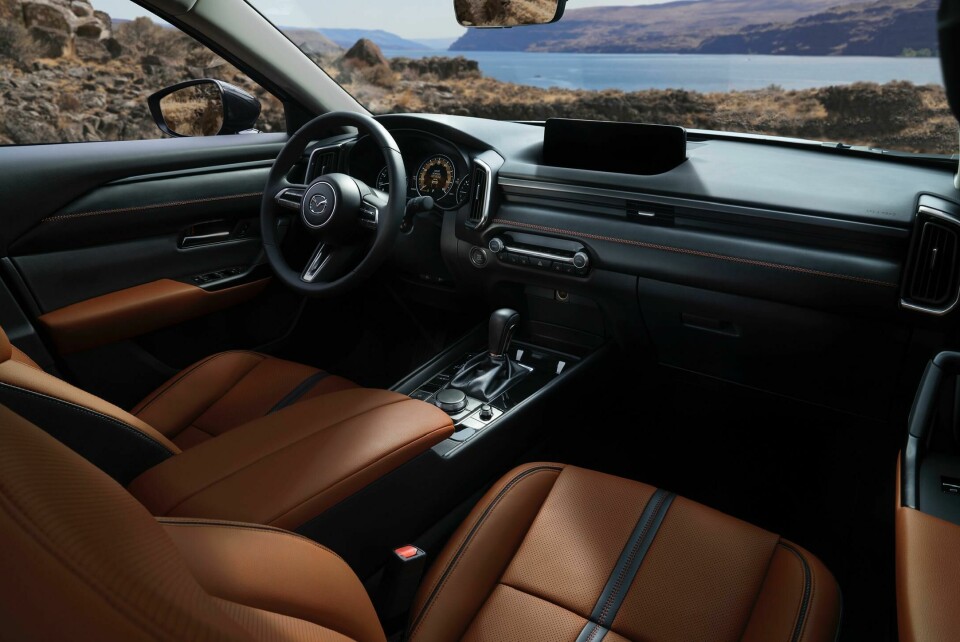
Although we didn’t get the exact same feeling towing a 3,500-pound trailer or traversing a dirt hill than we got dodging wild turkeys on curvy roads, the CX-50 feels stable in all modes and didn’t serve up any unexpected surprises. Part of this is due to a G-vectoring control feature, which helps the car steer more precisely by optimising load control (different from torque vectoring). The CX-50 also can split torque to control yaw motion of the car. Mazda’s driver-focused philosophy means it’s not heavy on semi-autonomous driving features, but a stop-and-go traffic jam assist feature offers adaptive cruise control and steering assist 40 mph and below.
Like all Mazdas, the cockpit is designed around the driver, with additional touches that Kimoto says are inspired by nature. The highest trims use two-tone leather upholstery with contrast stitching, while lower trims use a material that Kimoto says were inspired by the fabric of an outdoor jacket.
Other features that stand out in the CX-50 include a panoramic moon roof and an ample amount of cargo space. “With the long cargo space, we had difficulty coming up with the design,” Kimoto says. “Usually it kept turning out to be like a station-wagon style. But we managed to maintain an SUV while still securing enough cargo space. That was one of the most difficult things, so I hope people notice that balance.”
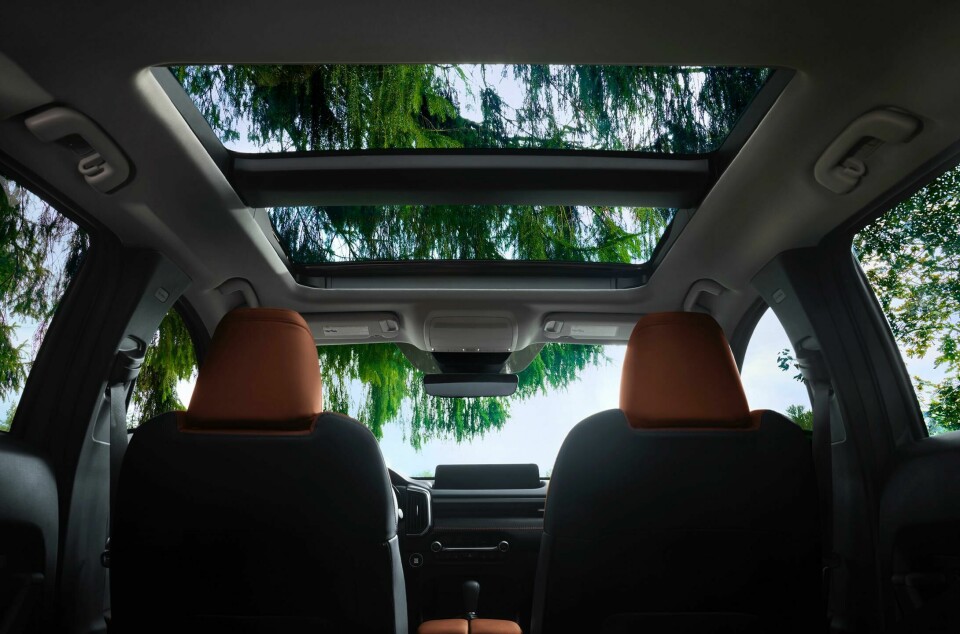
Both a boon and a bane to drivers is the display screen that sits atop the dash. The 10.25 display, which looks small in comparison to the sweeping screens of many new vehicles, is still controlled by a rotary knob in the centre console. “Mazda’s philosophy will always be putting the driver in control of the vehicle, because that’s safest and most connected,” Kimoto says. Yet, when a driver connects Apple Car Play or Android Auto, the CX-50’s screen can be controlled by touch, only for those features.
The high placement of the screen is indeed convenient and easy to see while driving —especially compared to some of those low-sitting portrait displays — but distance from the driver makes it hard to reach when using touch functions. We look forward to seeing how Mazda evolves its HMI in future vehicles to satisfy the demands of tech-hungry customers while keeping eyes on the road.
As a small company, Mazda does an admirable job working within its various constraints and has created a car that retains some of the brand’s strengths while expanding its capacity in the outdoor segment. The CX-50 will be built in Huntsville, Alabama at the new MTM Mazda Toyota Manufacturing plant. With this new facility, we hope this means more shared resources means a bright future for the Japanese brand.



